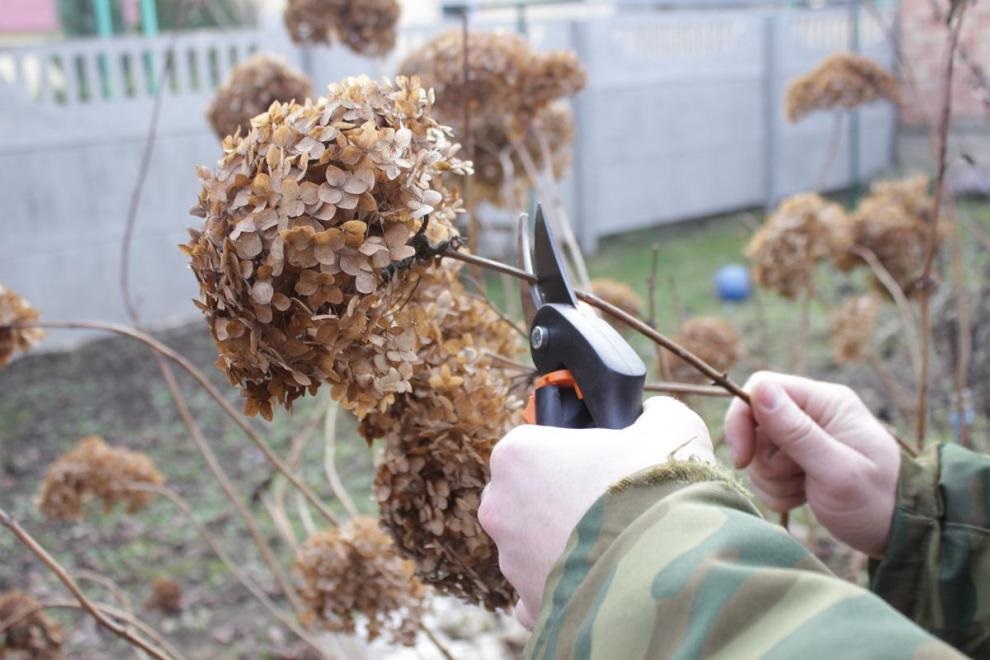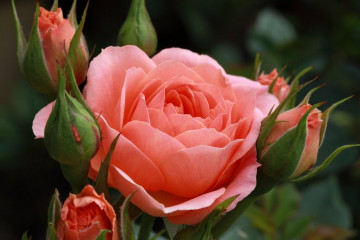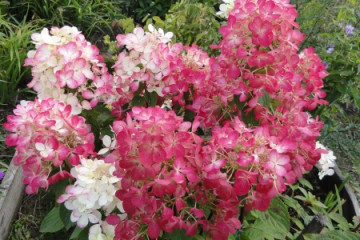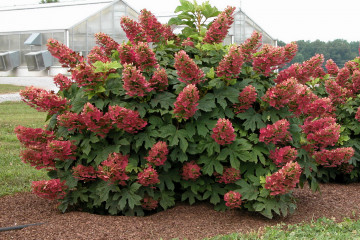Pruning hydrangea paniculata, treelike and large-leaved in spring and autumn
Content:
Hydrangea (in Latin transcription hydrangea) is a southern plant introduced to Europe in the 16th century. Its lush blooming bushes attract the attention of gardeners. The plant stands out for its variety of colors, thanks to which designers often use it when creating landscape projects. The main nuance in the care is the correct pruning of the hydrangea in preparation for wintering.
Why do you need hydrangea pruning
Through the efforts of breeders, many varieties of hydrangea have been bred. The pruning procedure requires adherence to the recommendations of specialists for the formation of a bush. It is important to consider varietal characteristics:
- flowering duration;
- the splendor of the bush;
- the size of the inflorescences.
Pruning is an essential part of plant care. The procedure is carried out in spring or autumn. In the spring, they wait for the buds to be tied on the branches. They track the direction of growth of new shoots. If the buds have begun to bloom, it is too late to prune. This can destroy the bush.
Each region has its own timing for trimming. They depend on how quickly the heat sets in. For the southern regions, this time is at the beginning of March, and in the northern regions - at the beginning of April.
In autumn, work is done late, since flowering ends in late September or early October. There are several options for pruning hydrangeas:
- Annual pruning of shoots in order to obtain a more powerful shrub with many peduncles.
- The ability to form the correct structure of the plant through the optimal placement of skeletal branches.
- Periodic sanitization by removing dry and damaged branches and cutting off dry inflorescences.
- Rejuvenation of the bush with complete pruning of old and diseased bushes.
When to prune shrub hydrangeas
Every grower should know when and how the plant is pruned. Its duration depends on the region of growth. For example, in the Moscow region, spring heat comes faster than in Siberia. There, severe frosts can last most of the winter. Therefore, in the middle lane, work begins earlier.
The main events are carried out in the spring, when the first buds hatch. It is not recommended to prune large-leaved hydrangea in spring, since the main shoots appear from the upper buds. If they are removed, the process of plant recovery may be delayed. Only slight cosmetic leveling of the surface is allowed.
To figure out how to prune a hydrangea for the winter, you should focus on removing old, twisted, and diseased branches. They interfere with the formation of the silhouette. At the same time, young shoots are not touched in the fall. Broken shoots are cut in half.
The average daily air temperature should be within 5-10 ℃ above zero (depending on the region). Frost-resistant varieties in the middle zone of the country are recommended to be cut in November.In the northern regions, sparing pruning is relevant, because the winter cold can destroy branches that are too short, even those that are considered frost-resistant.
Pruning young plants
Experts do not advise pruning plants under the age of three in the fall. They are not strong enough and may not be able to withstand the stress. Light sanitary cleaning is sufficient.
In the southern regions, you can safely cut out damaged branches in order to get a lush bush next year. It is believed that in a warmer growing area, autumn pruning is preferable.
It is important to take into account that different varieties of hydrangeas have their own specifics for carrying out autumn pruning. You can carry out work in the summer, when the decay process begins. This usually happens in July. If the summer is warm and the hydrangea does not have time to bloom until July, the procedure is postponed until the next season.
Pruning hydrangeas of different ages
Both young and old hydrangea bushes need pruning. In the first year, only long shoots are subject to shortening. At the same time, you cannot cut off too much. It will be enough to get rid of damaged and diseased branches.
In some cases, the procedure is carried out for faster adaptation of the flower to new soil and climatic conditions. As a result, the rate of growth of the root mass increases. In order for a hydrangea that begins to bloom to remain healthy and beautiful, the rules of pruning are observed.
Mature plants have the ability to reduce flowering intensity. The inflorescences become smaller and do not look as attractive as in the very first years. To keep the garden beautiful, and the plant itself healthy, rejuvenating hydrangea pruning is carried out. Work requires compliance with the rules:
- All last year's shoots are cut without regret to the level of three buds. This will give impetus to the rapid development and powerful flowering of the shortened branches.
- Dry and frozen branches are removed in the same way. They worsen the decorative properties of the bush and negatively affect its health.
- For access to the sun's rays, branches growing inside the crown are cut off. They create unnecessary density of the bush, inside which pathogenic bacteria and fungal spores develop.
- When pruning, cut off the shoots that originate from the roots of the plant. They reduce the protective properties and extract useful substances from the root system.
- Radical pruning brings sick and old bushes back to life. The rejuvenation scheme literally transforms the flower. In this case, only small stumps are left from the branches.
For work, use a sharp hacksaw to do less damage to the culture. Slices immediately after the end of pruning are treated with an antiseptic composition or garden varnish. The instrument is disinfected before work in order to exclude the development of infection.
Features of pruning different types of hydrangea
The technique and time for pruning beautifully flowering bushes depends on the type of plant. The most popular among gardeners are paniculate hydrangeas that bloom on the shoots of the current year. But there are also large-leaved varieties that bloom on last year's shoots (tree-like and oak-leaved varieties).
Pruning of paniculata hydrangea (paniculata) is carried out in early spring. The first time, the branches are cut low so that the bush develops evenly and does not look weak. Work requires accuracy:
- Pruning of panicle hydrangea in spring is carried out before the buds swell. It is important to correctly determine the moment.
- Broken and old branches are removed, young ones are simply shortened to the level of the fifth bud.
- The shoots that create extra density are removed.
Treelike hydrangea varieties need rejuvenation every five years. The step-by-step method has features:
- It is better not to touch the bush until three years, carrying out only sanitary cleaning. This will allow him to strengthen and become lush.
- After a few years, a full pruning of the tree hydrangea is carried out, in which dry and damaged shoots are completely removed.
- Young branches are cut in half, provided that three or four healthy buds remain on them.
- Once every five years, a rejuvenating pruning is carried out, in which only small hemp remains.
Large-leaved or garden hydrangea does not bloom in the first year after planting. In order to wait for beautiful flower stalks next year, the bush should be protected from the cold. To do this, cover the plant with a layer of peat.
Caring for hydrangeas after pruning
After pruning, be sure to feed the plants. For this, complex fertilizers are used with the required amount of mineral and organic substances. The trunk circle is mulched with compost or other fertilizer. Its layer should be at least five centimeters. This will have a beneficial effect on the development and flowering of hydrangeas. In the summer, it is recommended to feed the flower with chicken droppings by diluting a liter of the substance in a bucket of water. For varieties that do not tolerate frost, they make a special shelter from peat or foliage.
Frequent mistakes
To maintain the health of the plantings, it is important to know the peculiarities of pruning of each variety and try to prevent them from working. These include:
- Insufficient or improper care of the plant after pruning.
- Choosing the wrong time. This negatively affects the development and splendor of flowering.
- Errors can lead to inhibition of growth or even death of the bush (at least reduce its decorative qualities).
In order for the hydrangea to please with lush and long flowering, periodic pruning is necessary in compliance with the rules for the formation of a bush, taking into account species characteristics. This will transform the garden and enjoy the abundant flowering all summer.



















